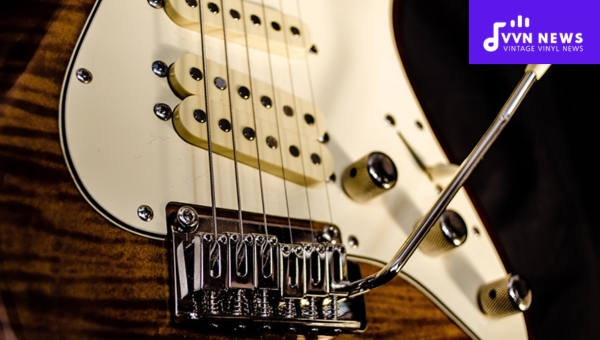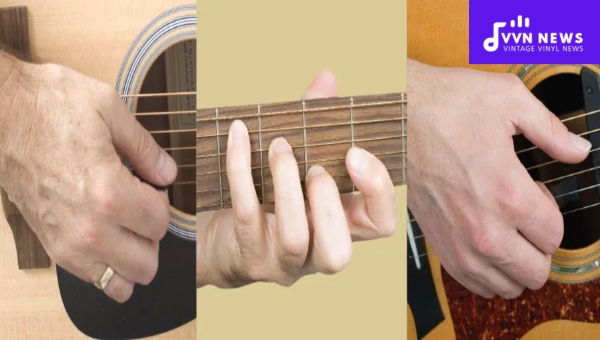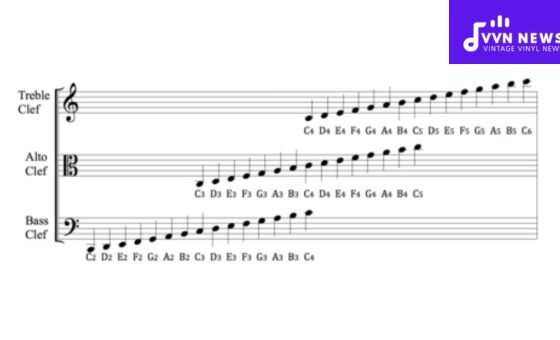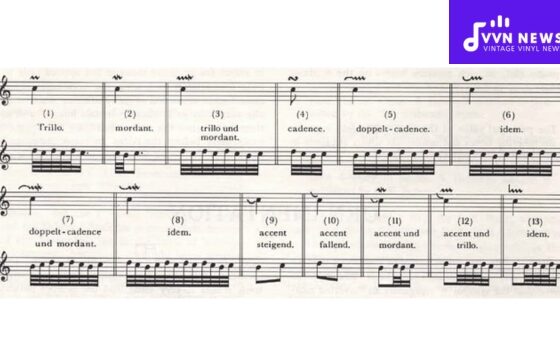As a guitarist, one question that has always intrigued me is “What is guitar tone?” We’ve all heard the term thrown around in music circles, whether you’re a seasoned player or just starting to explore the world of six strings.
Yet, its definition often remains shrouded in layers of ambiguity and misconception. Today, let’s illuminate this pivotal aspect of guitar playing.
The term “guitar tone” can stir images of iconic musicians wielding their instruments with soulful expressions painted on their countenances – be it B.B.
King with his tender touch or Jimi Hendrix with his wild abandon. Behind those memorable performances is the intangible yet potent entity called ‘tone’.
It’s much more than just a simple product of musical gear or technical finesse. It’s practically a gateway into a musician’s artistic intent and emotional depth, opening up fresh dimensions in our journey through the harmonic landscape.
What is Guitar Tone?
Fundamentally, guitar tone refers to the unique sound that each guitar creates. It encompasses two main factors: timbre and quality.

Timbre describes the character or color of your sound, differentiating one guitar from another even if they’re playing the same note at the same volume. Factors like wood type, strings, and pickups play into this aspect.
On the other hand, we have quality. Your technique primarily determines this – whether you pick hard or soft, fingerpick, use a slide, etc. Quality also depends on additional pieces of gear, such as amps and pedals.
In a nutshell, your guitar tone is the overall sonic output of your instrument, uniquely crafted by your choice of equipment and how you choose to play it.
It’s vitally influential to your music’s feel and mood – it can take any emotive message you wish to put forth and deliver it on powerful harmonic wings.
Also Read: 25 Best Guitarists Of All Time [String Masters Who Shaped Music]
Emphasizing the Importance of Guitar Tone Knowledge
Gaining a deep understanding of guitar tone is not merely a way to take your sound engineering skills to the next level.
More importantly, it’s about creative self-expression and actively engaging in an enriching dialogue with your audience.
The Role of Guitar Tone in Music
Musically speaking, your guitar tone has the potential to impact the overall feel and mood of a song deeply.
It can create an emotional connection between you and your listeners, giving life to intangible emotions through sonic texture.
Impact on Listeners
Having a unique and well-balanced guitar tone makes you immediately stand out.
A phenomenal solo, at times, might not just be about an intricate melody or lightning-fast picking sequences—it is often manifested through unique tones that resonate with the listener.
In Pursuit of Your Unique Sound
By unlocking the richness and diversity within tone variations, you also unlock realms of creative possibilities.
Once wrapped around these subtleties, you’ll start to command your instrument much like a painter wields his brush—an artist choosing colors from a vast palette, creating music that’s unmistakable ‘you.’
Whether you’re a passionate hobbyist or aiming to be a professional musician, delving into guitar tone knowledge is undoubtedly one transformative journey begging to be embarked on.
Key Components Determining Your Guitar Tone
A multitude of factors work in harmony to shape your distinctive guitar tone. Everything from the way you hold your pick to the guitar strings and amplifiers you use contributes to this.

Let’s uncover these integral components in more detail.
Hands & Pick
One might argue that the journey of guitar tone begins right here: with your hands and the pick you use.
The way you strum or pluck the strings can dramatically change the sound. For instance, strumming near the bridge gives off a brighter tone, while nearer to the neck lends a warmer essence.
The thickness and material of your guitar pick also influence the tonal output. Heavier picks generally provide a louder volume and fuller tone, while lighter picks lend a softer, more muted sound.
Pickups
Pickups play a pivotal role by capturing mechanical vibrations and converting them into an electric signal that represents your guitar’s tone.
Different types of pickups offer diverse tonal flavors. Single-coil pickups typically produce bright and clear tones, while humbuckers are known for their full-bodied, warm sounds.
Guitar
Every element of your guitar – from its body shape and type of wood used in construction to its setup – can significantly alter its tone.
Solid-body electric guitars are known for their sustain and louder volumes, whereas hollow bodies deliver a more resonant sound with clear overtones.
Strings
Even seemingly small things like your choice of guitar string can have an impact on your overall sound.
Thicker “heavy gauge” strings offer richer tones, while lighter ones allow for ease of playability and tend to yield brighter tones.
Amplifiers
An amplifier’s role goes beyond simply projecting your guitar’s voice; it shapes it, too!
Amps lend coloration from subtle warmth to high-gain distortion depending on their construction – tube amps are revered for their ‘warm’ tube distortion. In contrast, solid-state amps offer precision and clarity like no other type!
Pedals
Much like spices in an intricate dish, pedals add flavoring layers to our base tone.
Whether it’s reverb giving celestial dimensions or distortion serving aggressive grit – pedals not only expand our tonal palate but also allow us personal artistic statements.
In essence, getting that perfect guitar tone takes time, and it’s about exploring different components until you hit upon what resonates with your unique musical vision.
Also Read: 15 Richest Guitarists In The World [Rock Stars Making Bank]
A Deep Dive into a Variety of Guitar Tones
The magical world of guitar tones is vast and richly diverse, offering a sonic palette that can cater to our every mood and creative whim.
Let’s focus our scope on three fundamental tone types – a bright, chime-y clean tone; a heavy, high-gain distorted tone; and a warm blues-y soloing or rock riffing tone.
Understanding each of these tones can significantly enhance your guitar-playing capabilities.
1. Bright, Chime-y, Clean Tone
The bright, chime-y, clean tones are reminiscent of springtime mornings with birds singing in the trees. With a gleaming treble response, these tones breathe life into genres like country, pop, and twangy indie rock.
Achieving this tone primarily involves picking close to the bridge and using single-coil pickups, preferably with a clean amp setting.
2. Heavy, High-Gain Distorted Tone
When you think heavy music – be it hard rock or mind-melting metal genres – it’s synonymous with high-gain distorted tones.
This sound is raw power personified – gritty, thick and full-bodied. It’s impossible to imagine blistering solos without this chunky ‘overdriven’ texture or distorted chords enforcing weighty riffs.
3. Warm Blues-y Soloing or Rock Riffing Tone
This tone is all about warmth and depth – not too harsh nor too smooth but somewhere comfortably in between, perfect for letting emotional solos soar or giving rock riffs their bite.
If B.B. King’s heartfelt leads or Jimmy Page’s epochal riffage tugs at your heartstrings, you’re probably after this classic blues/rock tone.
Remember that these settings are guidelines rather than strict rules – part of the beauty in exploring guitar tones lies in experimenting with different parameters until you find your unique sound.
Also Read: B Minor Scale Explained [Play More Expressively On Your Guitar]
Guidelines for Maintaining and Enhancing Your Guitar’s Tone
Your guitar’s tone can be heavily influenced by the state of your instrument and how you utilize your gear.

Let’s look at some practical ways to maintain and enhance that signature sound:
Quality Strings
First and foremost on this journey is considering the type of strings you use. Opting for high-quality strings can significantly enhance your guitar’s tone. Unlike cheap variants, good-quality strings provide a brighter, clearer sound and sustain notes longer.
Regular Maintenance
Regular maintenance is another key factor. Cleaning your guitar regularly, especially the fretboard, helps to elongate its lifespan and maintain its sound quality.
Amp Settings
Another crucial aspect lies in understanding your amp settings like ‘gain‘ or ‘equalization‘. Try experimenting with these to change your amplified tone, but remember: less is often more.
Guitar Setup
A well-set-up guitar hugely affects the playability which inherently dictates the tonality. For instance, pickup height adjustment can influence how hot or loud a pickup’s output is.
Remember that even small adjustments can create significant shifts in your tone.
There’s no one-size-fits-all solution: finding the perfect tone involves several trials, errors, mistakes, successes, and frustration but ultimately results in pure ecstasy when you find ‘the one’. So let this be an adventurous exploration rather than a rigid quest.
Also Read: Understanding Music Transposition: A Complete Guide
FAQs
What is the tone of a guitar?
The tone of a guitar refers to the unique sound quality or character that it produces. This could be described as warm, bright, clear, or full, among others.
How do I get tone on my guitar?
You can alter your guitar’s tone using various techniques such as picking position, pick type, and amp settings. It could also be influenced by the construction materials of the guitar and string types.
How important is guitar tone?
Guitar tone is extremely crucial as it largely defines your unique sound as a musician. It can affect how your music is perceived and can significantly contribute to your personal style or genre.
What frequency is guitar tone?
The frequency range of an acoustic guitar usually falls between 82 Hz (lowest E string) to 880 Hz (highest E string). For an electric guitar, it’s typically within 82 Hz to 1.3 kHz.
Is guitar tone in your hands?
Indeed, a player’s technique plays a significant role in shaping the instrument’s tone. How you pluck or strum the strings, where you do so on the fretboard – all contribute to your distinctive tonal output.
Also Read: Major 7th Intervals: Elevate Your Compositions with Ease
Conclusion
A guitar’s tone is its musical voice, and it has the wisdom to tell beautiful stories only if we dare to listen.
Hence, grasping the nuances of our guitar’s tone is a journey of growth, discovering, and refining our musical identity.
As guitarists, it’s vital to immerse ourselves deeply into the realm of tones. Equip ourselves with knowledge and experimentation; always strive to expand our tonal palette.
Every strum on your guitar string resonates with your unique voice and mood. So go ahead, explore fearlessly- create your own unique sonic signature!








